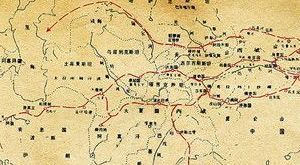Grand canal listed as world heritage
Shanghai Daily, June 23, 2014 Adjust font size:
CHINA’S Grand Canal and the ancient Silk Road were added to UNESCO’S World Heritage list yesterday, taking the nation’s total of such sites to 47.
The 1,794-kilometer Grand Canal, linking Beijing and Hangzhou, is the longest artificial waterway in the world and runs through eight provincial areas involving 35 cities.
The 2,000-year-old Silk Road was jointly nominated by China, Kazakhstan and Kyrgyzstan, the first time China has cooperated with foreign countries for a World Heritage nomination.
The south-north canal provided a major artery for traffic in a country where nearly all major rivers flow from the west to east. It also benefited China economically, militarily, politically and culturally.
The epic project was completed about 2,400 years ago, at least 1,200 years earlier than the Suez and Panama canals.
Constructed in sections from the 5th century BC onward, the canal was conceived as a unified means of communication in the 7th century AD.
It reached a peak in the 13th century, providing a unified inland navigation network in five of the most important river basins in China, including the Yellow River and the Yangtze.
The Grand Canal is the world’s oldest, largest and most extensive civil engineering project prior to the Industrial Revolution, the World Heritage committee said during its 38th session in Doha, Qatar’s capital, and was a reflection of Chinese people’s wisdom, determination and bravery.
Hangzhou first mooted the canal for inclusion in 2006. Three years later, 13 authorities from eight provincial regions jointly set up a team to prepare for a bid which was submitted by the State Administration for Cultural Heritage.
The Silk Road is directly linked to several tremendous historical events, the committee said.
Once used by camel-driving merchants carrying silk, porcelain and spices, it was an important corridor for trade and cultural exchanges between Asia and Europe but fell into disuse in the 16th century.
The 5,000-kilometer road has 33 historical sites along its route: 22 in China, eight in Kazakhstan and three in Kyrgyzstan, ranging from city palaces and pagodas to ruins in remote desert areas.
A PREHISTORIC cave in southern France containing the earliest known figurative drawings was granted World Heritage status yesterday.
Delegates at UNESCO’s World Heritage Committee voted to grant the status to the Grotte Chauvet at a gathering in Doha, where they are considering cultural and natural wonders for inclusion on the United Nations list.
The cave in the Ardeche region, which survived sealed off for millennia before its discovery in 1994, contains more than 1,000 drawings dating back some 36,000 years to what is believed to be the first human culture in Europe.
“I had the chance, I should say the privilege, to visit the cave ... and I was literally stunned by what I saw, which revolutionizes our views of our origins,” France’s envoy to UNESCO Philippe Lalliot said.
A French lawmaker for the Ardeche, Pascal Terrasse, described the cave as “a first cultural act.”
“This artist has now been recognized,” Terrasse said. “May he forgive us for waiting 36,000 years to recognise his work.”
UNESCO said the Grotte Chauvet “contains the earliest and best-preserved expressions of artistic creation of the Aurignacian people, which are also the earliest known figurative drawings in the world.
“The large number of over 1,000 drawings covering over 8,500 square meters, as well as their high artistic and aesthetic quality, make Grotte Chauvet an exceptional testimony of prehistoric cave art.”
The opening of the cave, about 25 meters underground, was closed off by a rockfall 23,000 years ago.
It lay undisturbed until it was rediscovered by three French cave experts in 1994 and almost immediately declared a protected heritage site in France.
“Its state of preservation and authenticity is exceptional as a result of its concealment over 23 millennia,” UNESCO said.
Access has since been severely restricted and fewer than 200 researchers a year are allowed to visit the cave, which stretches into several branches along about 800 meters and at its highest reaches 18 meters.
The painted images include representations of human hands and of dozens of animals, including mammoth, wild cats, rhinos, bison, bears and aurochs.
More discoveries are expected to be found in remote parts of the cave as yet unexplored, experts say.
(AFP)


